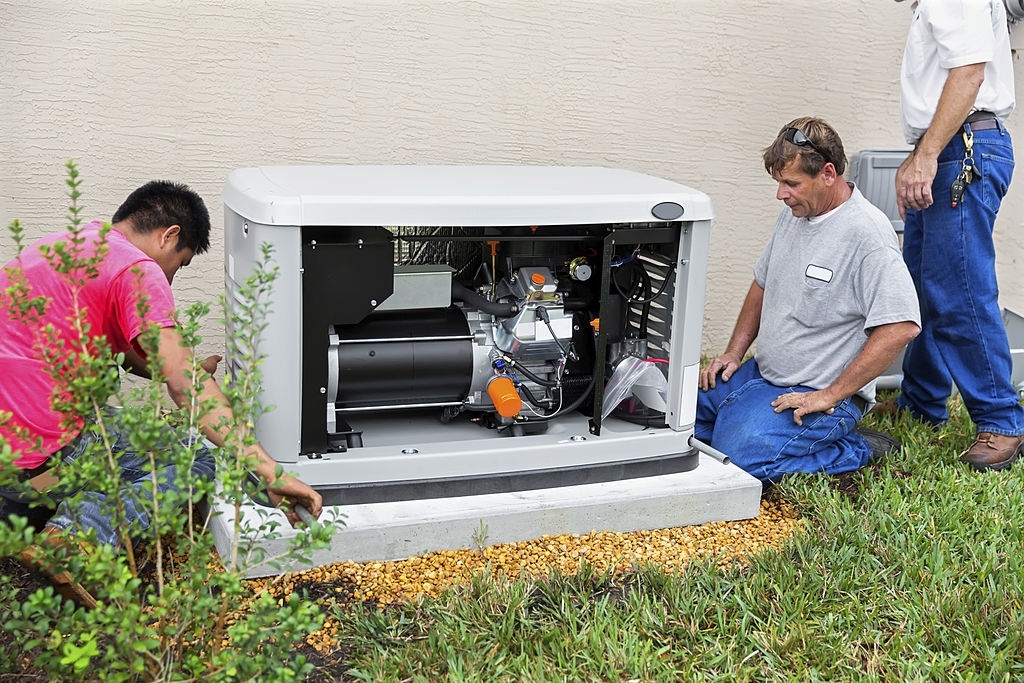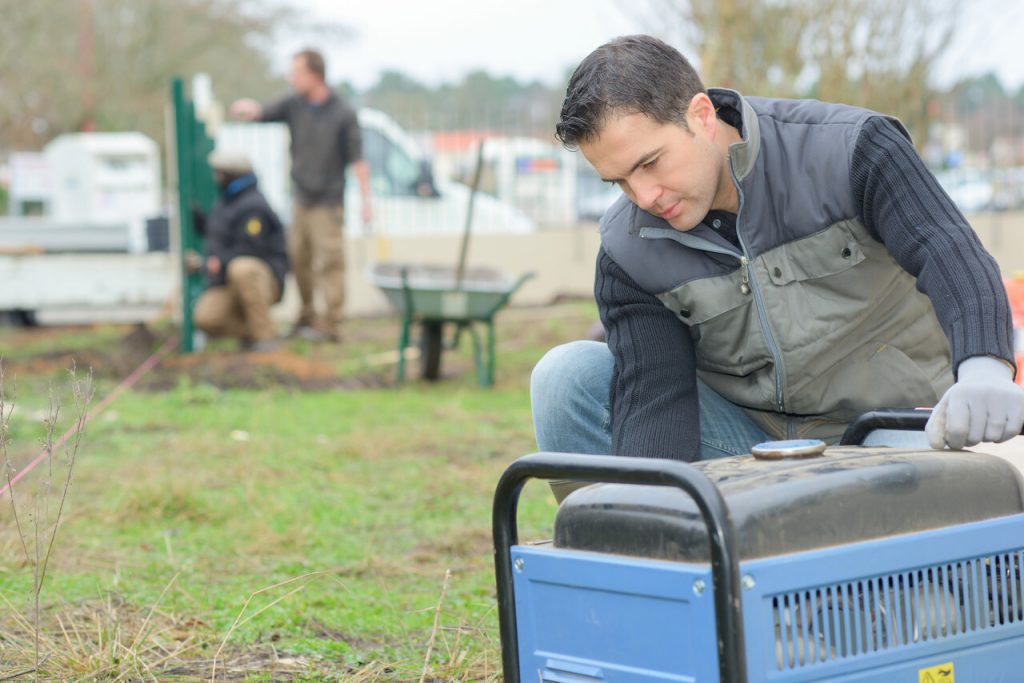Buying your very first generator can feel somewhat overwhelming. But we’ve got you covered with our list of Top 10 things to consider when buying a generator for home.
So, what you need to know before buying a generator? Well, lots of things. Like? What big of a generator should I buy? How do I calculate what size generator I need? Should I get a portable or standby generator? What are the safety measures to keep in mind before buying a generator? The list just goes and on. We might have all the answers you are looking for, if not all, most of them! So read on!
Things to consider when buying a generator:
1. How big a generator should I get?
This answer depends on the sum of the total load expected at any given time of the electrical loads that you want to power simultaneously, measured in watts.
First, start by adding up all the loads you know you want to be able to run simultaneously. Then decide which electrical item in your house demands the most electricity to start its motor and add that to your total, keeping in mind that the startup current of a pool pump motor, for example, is about 1.4 times the running load and bulky items like air conditioners and some refrigerators can be two or three times what they use while running.
Make sure that your generator can provide that extra electricity needed so that larger items won’t overload the system if they startup.
Every generator has two wattage ratings, that is, running wattage and surge wattage. Generators are rated for surge wattage because they should have some extra capacity in case the load you require is temporarily higher than what you’ve calculated.
When you buy a generator, choose the size based on its running wattage, and its surge wattage should automatically fall into line with what you will be needing.
Just in case you are worried about needing more surge wattage, then consider buying a larger generator.
2. What loads should you consider powering with the generator?
- Kitchen, bathroom, and sitting room lights
- One plugin kitchen for kettle or cellphone charger
- Refrigerator/freezer
- Television and decoder
- Garage door opener
- Microwave/oven
- Computer
- Security –alarm systems/electric fencing/lighting
3. How do I calculate what size generator I need?
All heating appliances like stoves, dishwashers, geysers, heaters, kettles, tumble dryers, hairdryers, and toasters draw the most power. Controlling the number of lights that are switched on during generated power is advisable. Electronic equipment like PCs don’t use much power but are voltage sensitive.
If the generator does not produce a constant voltage and there are dips and spikes in the system, the equipment is likely to suffer damage. During generator use, it is best to turn off some appliances when using others.
Here’s a list of an average appliance and technology wattage needs:
| Appliances | Running Watts | Starting Watts |
| Deep Freezer | 500 | 1500 |
| Electric Water Heater | 4000 | 0 |
| Window AC – 10,000 BTU Window AC – 12,000 BTU Central AC – 10,000 BTU Central AC – 24,000 BTU | 1200 3250 1500 3800 | 3600 9750 4500 11400 |
| Iron | 1200 | 0 |
| Washing Machine | 1150 | 2250 |
| Refrigerator/Freeze | 700 | 2200 |
| Microwave Oven – 625 Watts Microwave Oven – 1000 Watt | 620 1000 | 0 0 |
| Coffee Maker | 1000 | 0 |
| Color TV – 27 in. Video Game System | 500 40 | 0 0 |
What size generator do I need for my house calculator formula:
Recommended wattage =(Appliance with the highest starting wattage+ total running wattage for all other appliances= Total Wattage
4. Do you need an electrician to hook up a generator?
It’s always safe to have a licensed and experienced electrician to carry out the installation with expertise in wiring the switches as incorrect wiring of all the live, neutral, and earth wires could be life-threatening.

The local supply authority should be contacted to understand their particular requirements when a genset is installed. You can check whether the electrician is registered by reaching out to your local offices of the Electrical Contracting Board. Also, make sure that he gives you a valid electrical certificate of compliance.
Don’t attempt this work yourself and never plug a supply from a genset into a socket of your house. If you do not want to install a transfer switch, a temporary extension lead from the genset can be used to plug in the equipment that you require. The lead size is necessary to ensure that it can carry the required load.
The transfer switch is a manual device with three switching positions. One is for the main supply and the other one for the generator supply. When the main supply fails, the switch will have to be manually turned from the mains to the generator supply. The whole process is repeated once the main supply returns.
This “switching” procedure is an essential part of the process as a back feed can be dangerous as well as cause damage to the generator and electronic devices such as TV, computers, etc.
The generator supply and main supply must never run in parallel. These transfer switches can also be controlled automatically but this is quite complicated and costs a great deal more.
5. Can you plug a generator into a wall socket?
No. You must avoid back feeding, as it’s very dangerous for a variety of reasons. For example, if you forget to launch the main circuit breaker to electrically isolate the house from the grid, then your generator can send electrical power beyond the house and out onto the grid.
Moreover, in case the earth leakage or main switch is left on when grid power resumes it will damage your generator and could even cause electrical or other fires and many other harmful hazards.
Moreover, if you choose to switch off the earth leakage main switch to avoid this issue, you need to keep in mind that your family is at high risk of electrocution as when back-feeding power to your house, as the electrical system will not have any earth leakage protection.
6. What’s the difference between a standby generator and a backup generator?
A standby generator is permanently installed equipment just like a central air-conditioning system. Its engine runs on propane or natural gas. A backup generator is a small, portable, petrol-engine generator that you can wheel around into position outside the house and plug into the transfer switch. It can be connected to electrical loads through heavy-duty extension cords.

Should I get a portable or standby generator?
It depends on your requirements and budget. Portable generators are much cheaper than standby and they come with built-in outlets to directly connecting suitable extension cords if you haven’t installed a transfer switch. If you are looking for a cost-friendly option then you should definitely go with a portable one. They can easily power most out of your appliances and you don’t have to pay extra for their installation like in the case of standby generators.
7. Can you run a generator in the garage as long as the door stays open?
Never run a generator indoors, inside a house, a garage, under a carport, inside a screened porch, or near an open window. Even with the garage door open, the carbon monoxide gas in the generator’s exhaust can sicken somebody inside the house or, in the worst case, even kill someone.
8. Other safety tips to keep in mind when buying a generator
It’s good to have CO detectors in the house when using a generator. Keep the generator at least 5 meters from the house to reduce risks from CO and also the potential danger of the generator’s hot muffler melting the vinyl siding.

Do you have to turn off generator to refuel?
Yes. Never fuel a generator while it is running or when it’s hot as it is a huge fire or explosion hazard. So, let it cool before you refuel it again.
9. Are home generators noisy?
It depends on the amount of load the generator is handling. The more the load, the more is going to be the noise. However, there are many advanced generators that do a better job than traditional or older ones at adjusting engine rpm to their electrical output.
This decreases their running speed, which is quieter and conserves fuel. Before buying one, make sure to check out the noise levels of the generator in (dBA) to get a much less noisy option.
Besides that, there are silencers or mufflers that are attached to the exhaust pipe on the generator which helps to suppress the noise.
10. Does the generator need to be grounded?
For this, you should follow the instructions in the owner’s manual. If the manual signals for grounding the generator, that’s quite easy enough to do.
One simple way to do this by running a 12-gauge ground wire from the grounding terminal on the generator to a copper ground rod you’ve run into the soil next to the generator. The generator has a grounding terminal symbol to help you recognize the terminal’s location.
As long as you follow through with the instructions provided in the manual, the generator will be grounded safely.
Here’s a quick checklist of things to consider when buying a generator:
- Safety
Make sure that the generator is installed correctly or connected to the building via a suitable and approved change-over switch which includes installation of an over-current protection circuit breaker in the main distribution board by a certified electrician.
- Total electrical load to be connected
- Voltage, frequency, and phase
- Do you want the generator to start automatically?
If yes, then an automatic mains failure (AMF) mechanism needs to be installed. If not, then a system needs to be put in place for manual start and switch over.
- A suitable location for the generator –outside or in a vented area.
- Noise levels
- Altitude and running time
So these were the top things on our list that you should consider when buying a generator. We hope that this was of some help to you and would make your task a little easier!

